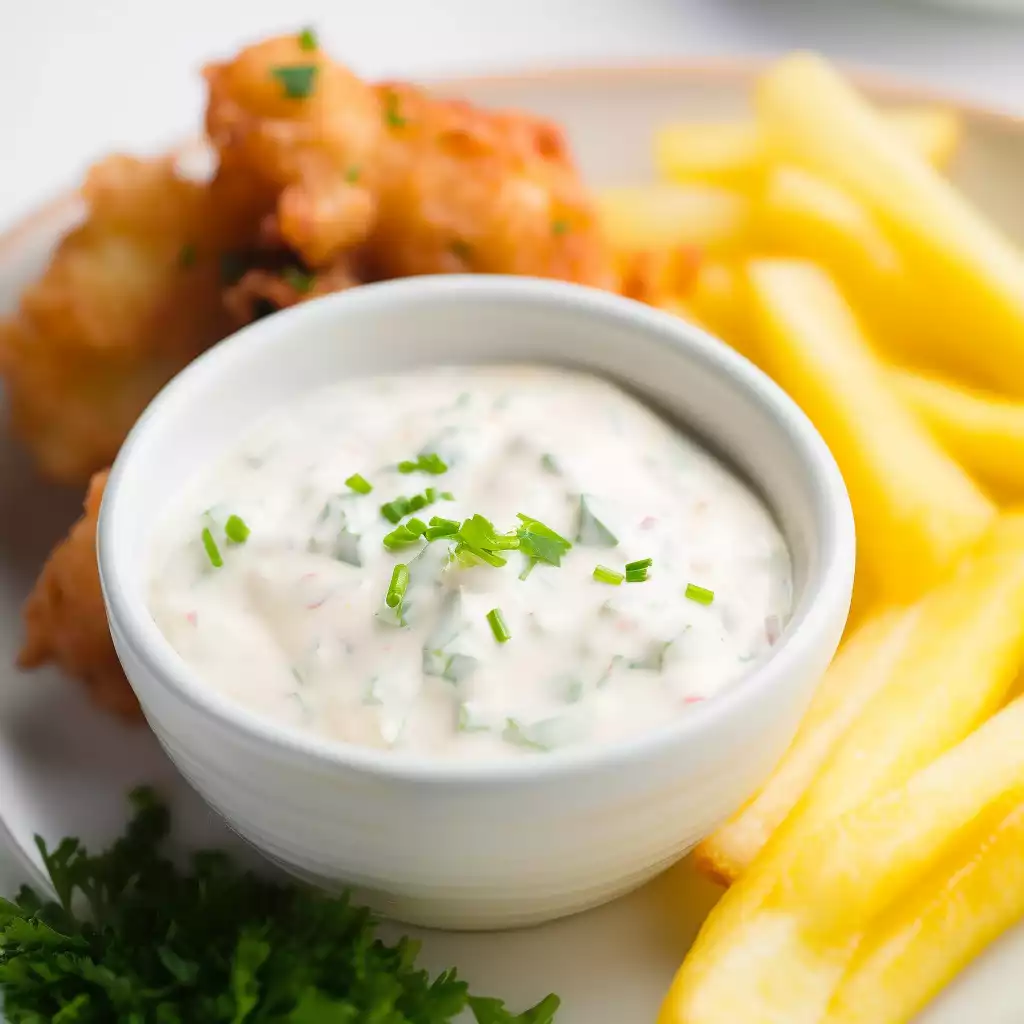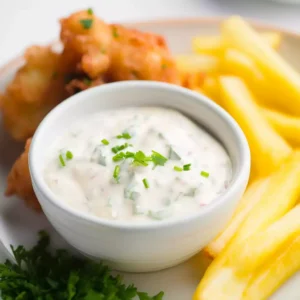
Tartare sauce, a classic condiment with a rich history, is a versatile addition to any culinary repertoire. Originating in France, it was traditionally served with fish dishes, particularly fried fish, to add a zesty and tangy flavor.
Over time, its popularity has spread worldwide, finding its way into various recipes and cuisines. Despite its gourmet connotations, crafting your own tartare sauce at home is surprisingly simple, making it an ideal starting point for novice cooks looking to elevate their dishes.
Creating homemade tartare sauce allows for customization, ensuring it perfectly complements your preferred flavor profile. With just a handful of common ingredients like mayonnaise, gherkin, parsley, lemon juice, salt, and pepper, you can whip up a batch in no time.
The beauty of this recipe lies in its simplicity; each ingredient plays a crucial role in achieving the desired balance of creaminess, acidity, and freshness.
While tartare sauce may seem daunting at first glance, fear not! With clear instructions and a bit of patience, you’ll soon master the art of blending these basic ingredients into a delectable sauce.
Whether you’re serving up crispy fish fillets, seafood platters, or even as a dip for your favorite snacks, homemade tartare sauce is sure to impress with its vibrant flavors and homemade charm. So, let’s dive in and discover the joy of crafting this timeless condiment from scratch.
Expert Tip: Allow the tartare sauce to chill in the refrigerator for at least 30 minutes before serving to enhance its flavor.
Mayonnaise: Creamy and rich, mayonnaise serves as the base of tartare sauce, providing a velvety texture and binding all the ingredients together.
Gherkin: These tangy pickles add a delightful crunch and a burst of acidity, balancing the creaminess of the mayonnaise.
Parsley (Finely chopped): Fresh parsley lends a bright, herbaceous note to the sauce, enhancing its overall freshness and aroma.
Lemon Juice: The acidic kick of lemon juice cuts through the richness of the mayonnaise, imparting a refreshing tanginess to the sauce.
Salt: A pinch of salt enhances the flavors of the other ingredients, while also serving to season the sauce to taste.
Black Pepper: A hint of black pepper adds a subtle warmth and depth to the tartare sauce, rounding out its flavor profile.
Expert Tip: Experiment with different herbs such as dill or chives for a unique flavor twist.
Expert Tip: For added freshness, use freshly squeezed lemon juice rather than bottled lemon juice.
Yes, store-bought mayonnaise works perfectly fine. However, you can also make your own mayonnaise if you prefer a homemade touch.
Homemade tartare sauce can typically be stored in an airtight container in the refrigerator for up to one week. Be sure to check for any signs of spoilage before consuming.
Absolutely! Feel free to adjust the quantities of ingredients such as lemon juice, parsley, or gherkin to achieve your desired flavor profile.
Yes, tartare sauce is typically vegetarian-friendly, as long as the mayonnaise used does not contain any non-vegetarian ingredients.
Yes, tartare sauce actually benefits from some time to allow the flavors to meld together. It can be made ahead of time and stored in the refrigerator until ready to use.
Here are some more recipes for you to enjoy! If you my recipes don’t forget to rate and leave a comment.
If you have any recipe suggestions, please do not hesitate to ask me. A great way to stay in contact with me is through Instagram, Facebook, Twitter and YouTube. Don’t forget to tag me @CookwithNabeela in your recipe photos!

Subscribe now to receive my latest recipes directly in your inbox. Stay up-to-date and never miss out!

I love to cook! I want to share with you my favourite, delicious family-friendly recipes. I want to inspire you to create fantastic food for your family every day.
Add your first comment to this post